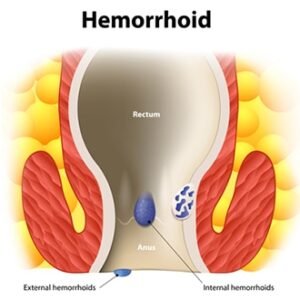Physical Therapy Exercise Program After a Colles’ Fracture
Rehabilitation Guide for Colles’ Fracture Recovery
A Colles’ fracture, often resulting from a fall on an outstretched hand, involves a break in the radius bone near the wrist. This injury typically requires surgical intervention to align the bones, followed by immobilization in a cast or splint. Physical therapy plays a critical role in restoring wrist and arm function. This guide outlines a home exercise program to complement professional physical therapy, focusing on regaining mobility, strength, and grip. Always consult your healthcare provider before starting any exercise regimen to ensure it’s safe for your condition.
Restoring Wrist Mobility
After immobilization, your wrist may feel stiff, and regaining range of motion is a priority. These gentle exercises help improve wrist flexibility and reduce tightness.
-
Wrist Flexion and Extension:
-
Extend your arm forward, palm facing down.
-
Slowly bend your wrist upward, as if signaling “stop,” and hold for 5 seconds.
-
Use your other hand to gently pull your fingers back, increasing the stretch.
-
Relax and repeat 5 times.
-
Next, bend your wrist downward, gently pulling with your other hand, and hold for 5 seconds.
-
Repeat 5 times.
-
-
Forearm Rotation:
-
With your elbow bent at 90 degrees, rotate your palm to face up, then down, as if turning a doorknob.
-
Perform 5 slow repetitions per direction.
-
These exercises target wrist flexion (bending down), extension (bending up), and basic rotation to prepare for more advanced movements.
Strengthening Hand Grip
Post-cast removal, gripping objects may feel challenging due to muscle weakness. These exercises aim to rebuild hand strength and dexterity.
-
Towel Squeeze:
-
Roll a small towel into a tight cylinder.
-
Squeeze the towel firmly for 3–5 seconds, then release.
-
Perform 10–15 repetitions, focusing on slow, controlled movements.
-
-
Hand Exerciser:
-
Use a hand therapy device, such as a grip strengthener, to perform slow squeezes.
-
Hold each squeeze for 3 seconds and complete 10–15 repetitions.
-
These activities help restore the ability to grasp objects securely, supporting daily tasks.
Enhancing Finger and Thumb Strength
Finger and thumb strength is essential for fine motor skills. Using therapy putty is an effective way to rebuild dexterity and power in these areas.
-
Putty Squeeze:
-
Take a small ball of therapy putty or modeling clay.
-
Squeeze the putty between your thumb and fingers for 5 seconds, then release.
-
Perform 10 repetitions, alternating between different finger combinations (e.g., thumb to index, thumb to middle).
-
-
Putty Ring Stretch:
-
Roll the putty into a thin tube and form a ring.
-
Place the ring around two fingers and gently spread them apart against the resistance.
-
Complete 10 repetitions for each finger pair.
-
These exercises improve finger coordination and strength, aiding in tasks like writing or buttoning clothes.
Building Wrist and Forearm Strength
Weakness in the wrist and forearm muscles is common after a Colles’ fracture. Light resistance exercises can help rebuild strength safely.
-
Dumbbell Wrist Curls:
-
Sit with your forearm resting on a table, palm up, holding a light dumbbell (1–2 pounds).
-
Slowly curl the weight upward by bending your wrist, then lower it back down.
-
Perform 10–12 repetitions for 2 sets.
-
Repeat with your palm facing down to target wrist extension.
-
-
Progression:
-
As strength improves, gradually increase the weight (consult your therapist first).
-
Avoid heavy weights initially to prevent strain.
-
Always check with your physical therapist to ensure the resistance level is appropriate for your recovery stage.
Key Considerations for Safe Recovery
-
Pain Management: Mild discomfort during exercises is normal, but stop if you experience sharp pain. Use ice or over-the-counter NSAIDs like ibuprofen, as recommended by your doctor, to manage swelling or soreness.
-
Wrist Supports: Avoid relying on wrist wraps during recovery, as they may lead to muscle dependency. Focus on building natural strength through controlled exercises.
-
Recovery Timeline: Full recovery typically takes 12–16 weeks of consistent physical therapy, though timelines vary based on individual factors like age and injury severity.
Conclusion
Recovering from a Colles’ fracture requires patience and a structured approach to physical therapy. By incorporating these home exercises—focused on mobility, grip, and strength—you can support your rehabilitation and regain functional use of your wrist and hand. Work closely with your physical therapist to tailor the program to your needs, and always prioritize safety to avoid re-injury.
💡 Frequently Asked Questions
What Motives Wrist Agony and How Can It Be TreatedFrequently Questioned QuestionsHow can I pay for soreness against a harmed wrist?
Answer coming soon. We are working on detailed responses to this common question.
Study Added:Nonsteroidal Anti-Inflammatory Agony Drugs Are wrist wraps favourable in the direction of hire Although oneself’re recovering versus a damaged wrist?
Answer coming soon. We are working on detailed responses to this common question.
Master Excess:Planning Muscle mass Vitality How prolonged do I will need in direction of do bodily cure for a harmed wrist?
Answer coming soon. We are working on detailed responses to this common question.
Discover Excess:What Comes about within Bodily Cure?
Answer coming soon. We are working on detailed responses to this common question.
⭐ Expert Tips
- Include seasonal or trendy variations to keep your meals exciting.
- Highlight prep shortcuts or time-saving techniques for busy cooks.
- Consider dietary restrictions and include substitution suggestions.
✅ Key Takeaways
- These dinner ideas are perfect for impressing guests or enjoying special occasions.
- Choose recipes that match your skill level and available kitchen tools.
- Presentation and taste both contribute to a memorable dining experience.
📣 Join Our Community
Want more inspiration like this? Subscribe to our newsletter for weekly dinner ideas and cooking tips!






